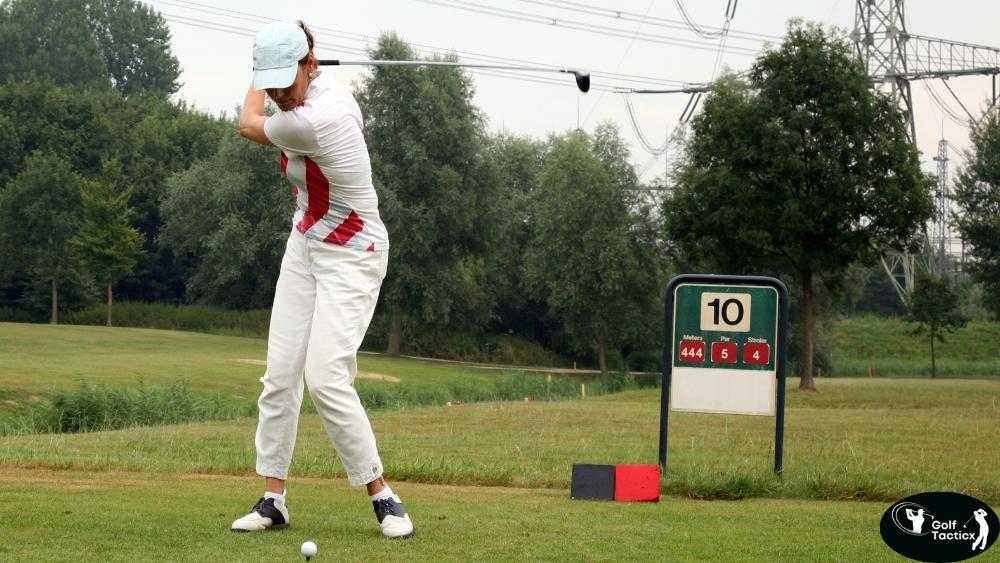In our previous post, we covered Handling Pressure Putts in Golf. In competitive golf, success goes far beyond just mastering your swing it’s about developing a strategic mindset and understanding how to navigate each course effectively.
An in-depth course strategy is crucial for tournaments, where every hole presents unique challenges that can make or break your performance. As an experienced player, you know that knowing when to attack, when to play it safe, and how to adjust to varying conditions can be the difference between a great round and a frustrating one.
We’ll explore how to tailor your strategy to the course layout, manage its hazards, and leverage your strengths to achieve consistent results under pressure. We’ll also discuss how weather patterns, pin placements, and even competitor behavior can influence decision-making.
Mastering a solid Golf Course Strategy for Tournament play means preparing both mentally and physically, studying course maps in advance, and building a game plan that adapts to real-time challenges. By applying these insights, you’ll approach each tournament round with confidence and control ready to make smart moves when it matters most.
Study the Course Layout
Before stepping onto the course, familiarize yourself with its design:
Tee Boxes: Identify the tee positions for each hole. Some tournaments may have specific tee placements that differ from regular play.
Fairways: Examine the width and any doglegs. Narrow fairways may require more accurate shots, while wider ones might allow for aggressive play.
Greens: Understand the size and undulation of the greens. A large, flat green differs from a small, sloped one in terms of approach shots and putting.
Hazards: Locate bunkers, water bodies, and out-of-bounds areas. Knowing their positions helps in shot selection and risk assessment.
Assess Your Strengths and Weaknesses
Reflect on your game:
Driving Accuracy vs. Distance: If you’re more accurate than long off the tee, prioritize hitting fairways over distance.
Approach Shots: Identify your preferred yardages and clubs for approach shots.
Short Game: Evaluate your chipping and putting skills, especially on different green types.
Recovery Skills: Assess your ability to save par after missed fairways or greens.
Pressure Performance: Notice how your game holds up under tournament stress.
Weather Adaptability: Understand how you perform in wind, rain, or extreme heat.
Develop a Shot Plan
For each hole:
Tee Shots: Decide on the club that offers the best balance between distance and accuracy.
Approach Shots: Plan for the optimal yardage to your preferred club.
Green Reading: Anticipate the slope and grain of the greens to aid in putting.
Manage Risks
While aggressive play can yield rewards, it also carries risks. Assess each situation:
Risk vs. Reward: Is the potential gain worth the risk?
Course Conditions: Wind, rain, and other factors can influence shot outcomes.
Tournament Pressure: Maintain composure and stick to your plan, even under pressure.
Practice Course Management
Effective course management involves making smart decisions:
Play to Your Strengths: Choose shots and strategies that align with your abilities.
Stay Patient: Avoid the temptation to play beyond your means.
Adaptability: Be prepared to adjust your strategy based on course conditions and performance.
Mental Preparation
A strong mental game is crucial:
- Visualization: Picture successful shots and outcomes.
- Focus: Concentrate on the present shot, not past mistakes or future holes.
- Resilience: Bounce back from setbacks with a positive attitude.
Utilize Technology
Leverage tools to enhance your strategy:
GPS Devices: Use them to measure distances accurately.
Course Apps: Some apps provide detailed course maps and player statistics.
Swing Analyzers: These can offer insights into your swing mechanics.
Pre-Tournament Preparation
Practice Rounds: Play the course at least once before the tournament to familiarize yourself with its nuances.
Mental Rehearsal: Visualize playing the course under tournament conditions.
Equipment Check: Ensure your clubs and gear are in optimal condition.
Green Speed Notes: Record putting green speeds and how they compare to your home course.
Hazard Practice: Focus on shots you’ll need for specific course hazards, like deep bunkers or tight doglegs.
Hole-by-Hole Plan: Create a reference sheet with preferred targets, layup spots, and safe miss areas.
Post-Round Analysis
After each round:
Review Performance: Identify what worked and areas for improvement.
Adjust Strategy: Modify your approach based on experiences from the round.
Stay Positive: Focus on progress and learning, not just outcomes.
By following these steps, you can develop a comprehensive course strategy that enhances your performance and enjoyment during tournaments. Remember, each course is unique, and adaptability is key to success.
Adapt to Weather Conditions
Weather can change the entire dynamic of a tournament round, so flexibility is key. Strong winds may force you to club up, take a lower ball flight, or adjust your target line, while rain can slow greens and reduce roll-out on drives.
Heat and humidity affect both stamina and ball carry distance, so proper hydration and pacing are just as important as swing adjustments. A smart Golf Course Strategy for Tournament play always includes contingency plans for different weather scenarios.
Build a Tournament Day Routine
- Warm-up Plan: Allocate time for range work, short game practice, and putting.
- Course Check: Review any updated pin placements or hazard conditions.
- Mindset Reset: Spend 5–10 minutes visualizing confident shots before tee-off.
- Nutrition & Hydration: Bring snacks and water to maintain energy.
- Pre-Shot Ritual: Keep it consistent to maintain focus under pressure.
Club Selection Matrix
| Hole Type | Common Hazards | Preferred Club | Alternate Club | Risk Level |
|---|---|---|---|---|
| Short Par 4 | Fairway Bunkers | 3-Wood | Hybrid | Low |
| Long Par 5 | Water Left | Driver | 3-Wood | Medium |
| Tight Par 3 | Elevated Green | 7-Iron | 8-Iron | Low |
| Long Par 4 | Narrow Landing Area | Driver | 5-Wood | High |
Conclusion
Developing an in-depth course strategy is essential for success in tournaments. By studying the course layout, assessing your strengths and weaknesses, and managing risks effectively, you can make smarter decisions and improve your performance.
Incorporating mental preparation, course management, and technology will give you a competitive edge. Pre-tournament preparation, practice rounds, and post-round analysis will further refine your approach. Stay patient, adaptable, and focused on playing to your strengths. With the right strategy, you’ll navigate any course with confidence, turning challenges into opportunities and achieving consistent results under pressure.
In our next post, we’ll focus on Adjusting Your Approach to Different Course Layouts and Designs, providing insights on how to tailor your strategy to various course features and challenges.
















Leave a Reply